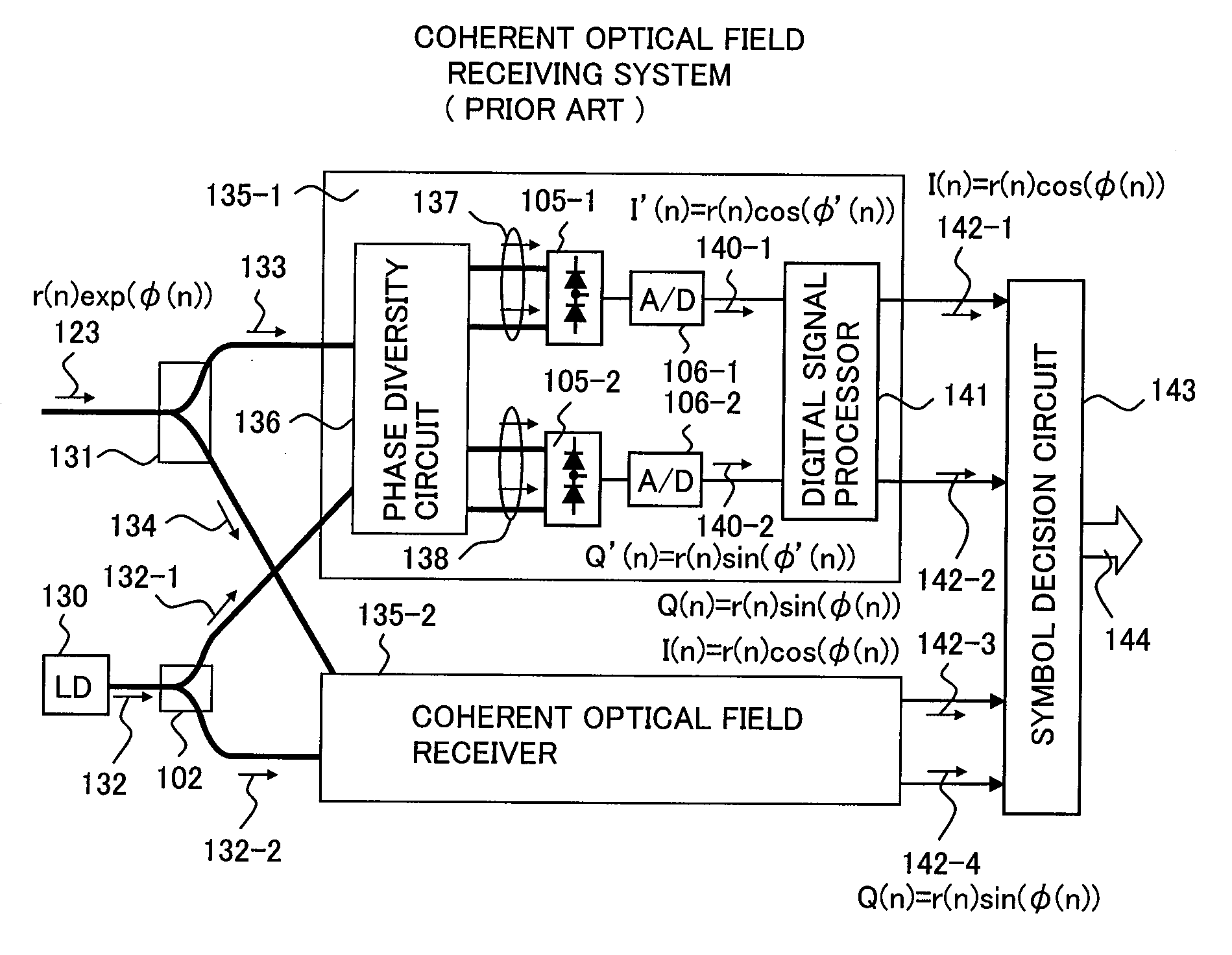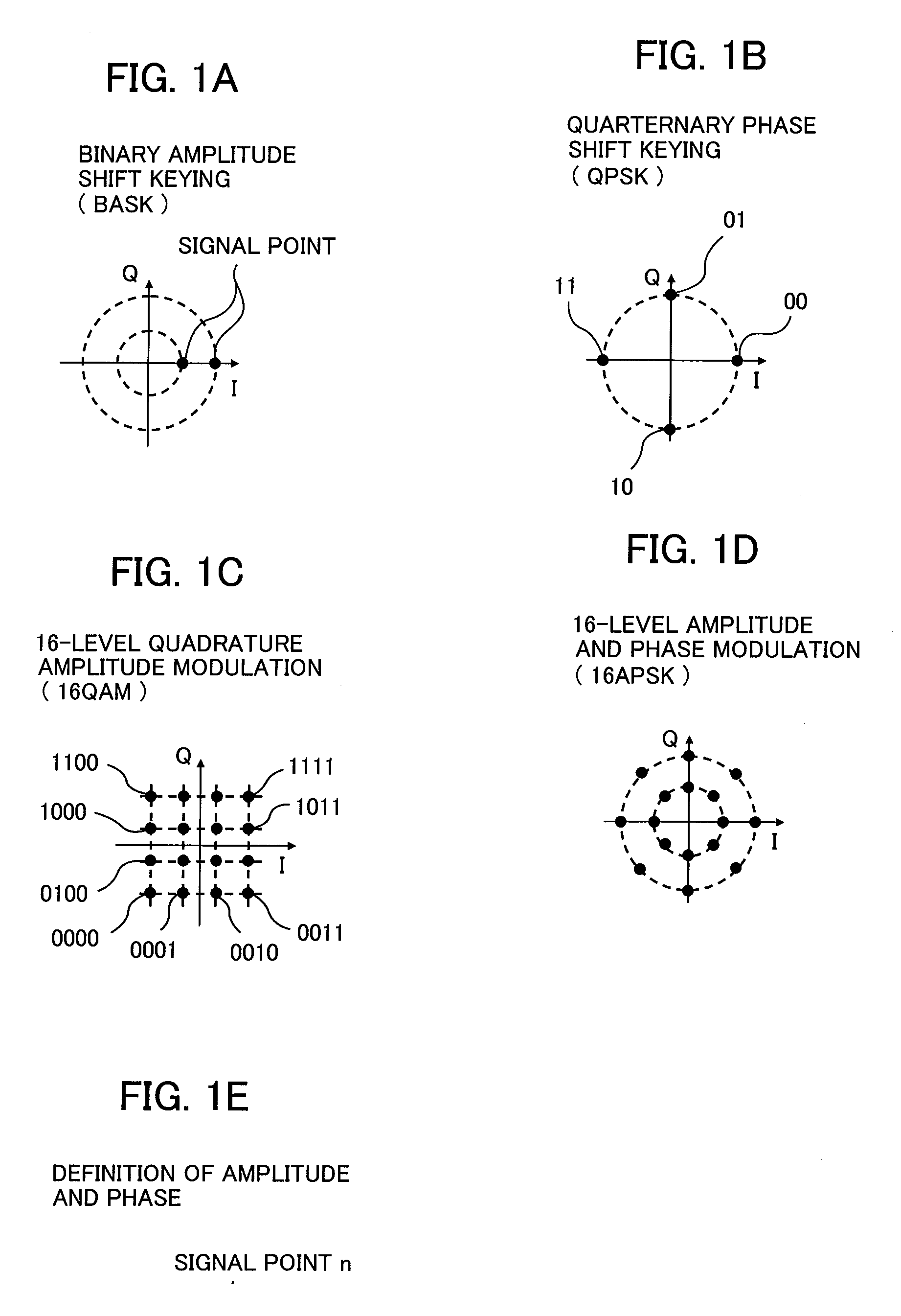Optical field receiver and optical transmission system
a receiver and optical transmission technology, applied in the field of optical information transmission technology, can solve the problems of complex receivers, low transmission efficiency, and low transmission efficiency, and achieve the effects of improving transmission efficiency, high accuracy, and simplifying the configuration of receivers
- Summary
- Abstract
- Description
- Claims
- Application Information
AI Technical Summary
Benefits of technology
Problems solved by technology
Method used
Image
Examples
first embodiment
[0064]FIG. 4 shows an optical field receiver 100 according to the present invention and an optical transmission system of the first embodiment using the optical field receiver. FIG. 4(A) is a view showing a configuration of the optical transmission system, wherein optical signal paths are shown by a thick line and electrical signal paths are shown by a thin line.
[0065]In the first embodiment, an optical transmitter 300 is a transmitter of binary phase modulation light. An unmodulated laser beam output from a laser 301 is input to an optical phase modulator 303 to perform phase modulation by applying a binary digital information signal 302 whose symbol rate is R to a modulation terminal of the optical phase modulator, and output from as a transmission optical signal 305 (optical field E(n)). The phase modulation is carried out so that a phase angle θ between signal points corresponding to a mark and a space of the information signal becomes equal to π / 2, as shown in a signal constell...
second embodiment
[0099]FIG. 7 shows an optical field receiver 100 according to the present invention and an optical transmission system of the second embodiment using the optical field receiver.
[0100]In the second embodiment, the optical transmitter 300 generates a binary intensity modulated light as a transmission optical signal 305 by applying the binary digital information signal 302 to the optical-intensity modulator 329. In the optical field receiver of the present invention, because the reconstruction of optical field becomes difficult when the optical signal intensity is about 0, the extinction ratio of the optical signal in the transmission optical signal 305 is previously degraded intentionally so as to be 0.1 to 0.3
[0101]The input optical signal 101 having been input to the optical field receiver 100 is branched into two ways by the optical branching circuit 150, in similar to the first embodiment. One of the branched optical signals is converted into an electrical signal by the optical de...
third embodiment
[0121]FIG. 10(A) shows the optical field receiver 100 according to the present invention and an optical transmission system of the third embodiment using the optical field receiver. In the third embodiment, a quaternary optical amplitude and phase modulator is used as the optical transmitter 300. For example, two groups of binary digital information signals 302-1 and 302-2 are input to an optical intensity modulator 329 and the optical phase modulator 309, respectively, so that a transmission optical signal 305 of the quaternary amplitude and phase modulation is generated by modulating the intensity and phase into two-levels, respectively.
[0122]FIG. 10(B) shows an example of the signal constellation of quaternary amplitude and phase modulated light. In applying to the present invention, the maximum phase transition θ between signal points is preferable to be limited to a predetermined value or less, in similar to the above-mentioned embodiments. In the case of measuring the phase of...
PUM
 Login to View More
Login to View More Abstract
Description
Claims
Application Information
 Login to View More
Login to View More - R&D
- Intellectual Property
- Life Sciences
- Materials
- Tech Scout
- Unparalleled Data Quality
- Higher Quality Content
- 60% Fewer Hallucinations
Browse by: Latest US Patents, China's latest patents, Technical Efficacy Thesaurus, Application Domain, Technology Topic, Popular Technical Reports.
© 2025 PatSnap. All rights reserved.Legal|Privacy policy|Modern Slavery Act Transparency Statement|Sitemap|About US| Contact US: help@patsnap.com



